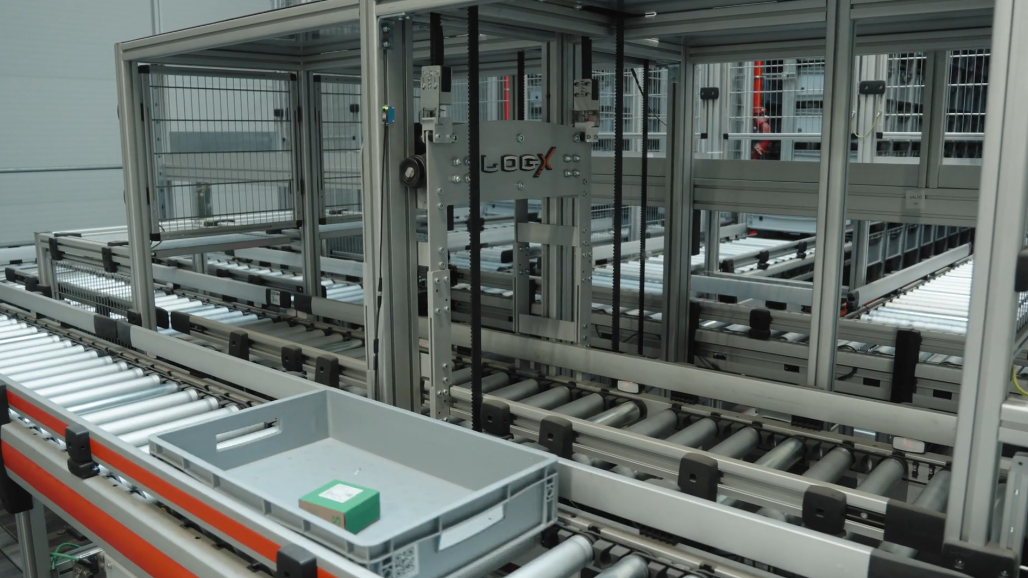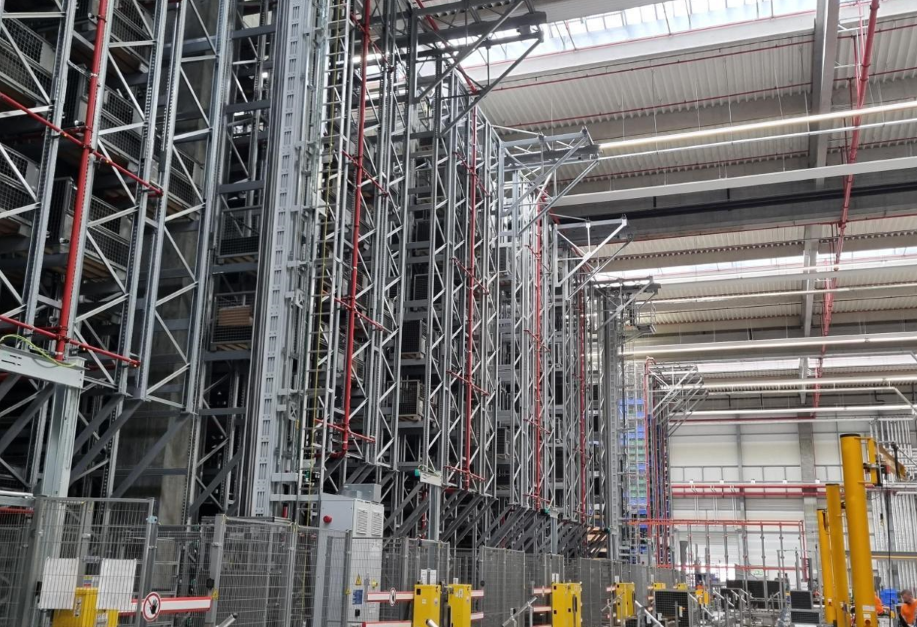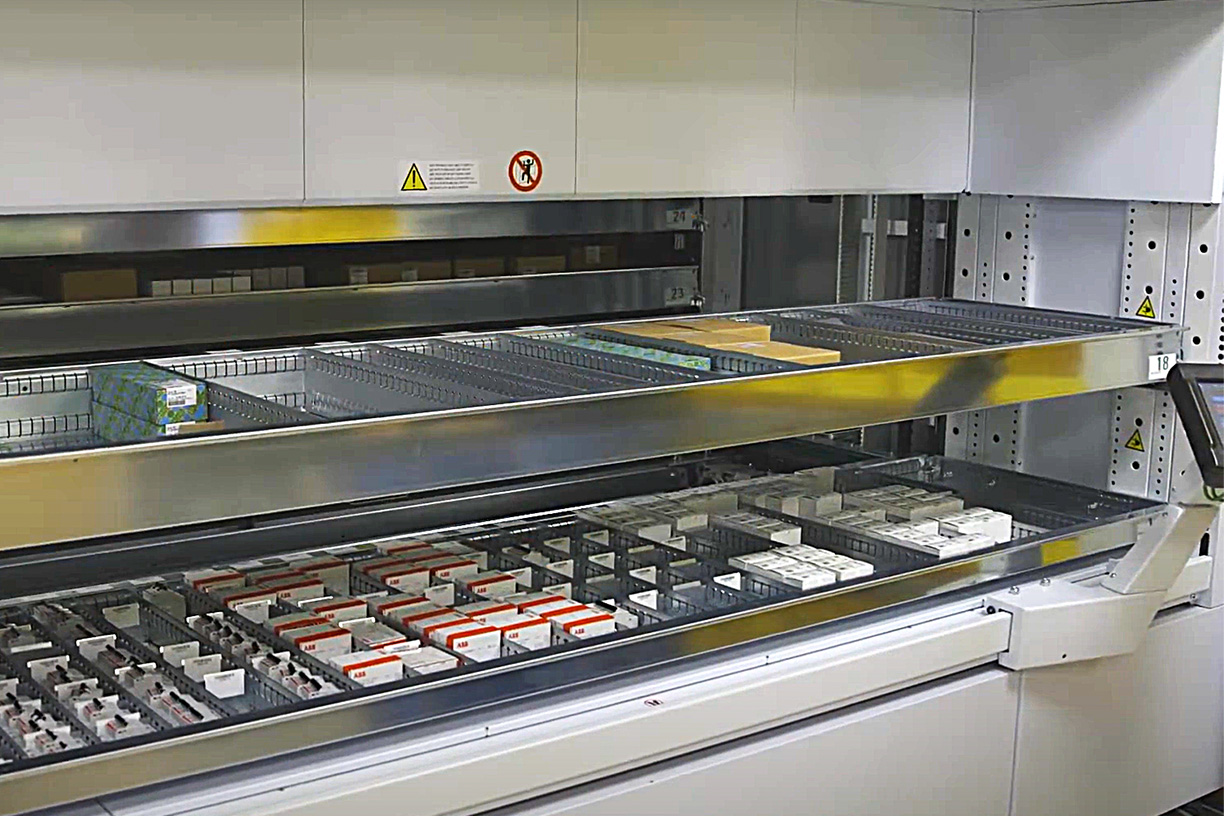In today’s fast-paced manufacturing landscape, effective storage solutions are not just a luxury-they’re essential. For industry leaders like Komatsu, achieving maximum efficiency in managing their vast inventory of spare parts is critical to supporting production and ensuring that maintenance downtime is minimized. Enter the Modula Vertical Lift Module (VLM), an advanced automated storage solution designed to optimize storage space, increase picking speed, and enhance operational efficiency.
This case study video walks us through Komatsu’s journey with Modula’s VLM and provides insights into how this state-of-the-art solution transformed their warehousing processes.
Key Challenges Faced by Komatsu
Komatsu faced several inventory management and storage challenges:
- Limited Space Utilization: The traditional storage racks were taking up significant floor space but offered limited vertical space utilization.
- Time-Intensive Picking: With a large inventory of spare parts, finding and retrieving specific items was time-consuming and labor-intensive.
- Error-Prone Manual Processes: Manual picking increased the risk of human error, leading to inefficiencies and inaccuracies in stock management.
Recognizing the need for a more streamlined solution, Komatsu turned to Modula’s VLM to solve these pressing issues.
Modula’s Solution: The Vertical Lift Module
The Modula VLM is an automated storage and retrieval system designed to bring efficiency to new heights-literally. It leverages vertical space in the warehouse to provide up to 90% more storage capacity within the same floor footprint. The module operates on an elevator-based system, where trays are dynamically retrieved and delivered to an ergonomic access point for easy picking.
Key Features of Modula’s VLM at Komatsu Include:
- Enhanced Vertical Storage: Leveraging vertical height allowed Komatsu to free up considerable floor space for other operational needs.
- Automated Retrieval: With a simple digital interface, operators could retrieve parts quickly and with high accuracy, eliminating the need to navigate long aisles.
- Ergonomics and Safety: The system’s ergonomic access point minimizes strain on employees and reduces the risk of injuries, contributing to a safer work environment.
Measurable Impact of the Modula VLM Implementation
Since implementing Modula’s VLM, Komatsu has reported significant improvements in several key areas:
- Space Optimization: The VLM allowed Komatsu to reduce floor space usage by up to 85%, freeing up valuable space for other activities and potential inventory expansion.
- Increased Efficiency: Automated retrieval enabled faster picking times, reducing overall picking time by up to 60%.
- Improved Accuracy: The digital interface and automated retrieval system decreased errors, improving inventory accuracy and minimizing stock discrepancies.
Why the Modula VLM Stands Out
The Modula VLM integrates seamlessly into existing operations and is flexible enough to accommodate different types of inventory. For Komatsu, this adaptability meant they could store a wide range of spare parts in one compact system. Moreover, the VLM’s ability to integrate with Komatsu’s existing warehouse management software (WMS) allowed for smooth operations and ensured real-time inventory tracking.
Realizing Long-Term Benefits
For Komatsu, the benefits of the Modula VLM extend beyond immediate gains in efficiency and space. With a modernized storage and retrieval system, they can now handle inventory surges, support more streamlined production processes, and potentially scale operations with minimal infrastructure changes.
Conclusion
Komatsu’s successful implementation of the Modula Vertical Lift Module showcases the transformative potential of automated storage solutions in modern warehousing. As manufacturers continue to innovate, systems like the Modula VLM offer the flexibility, efficiency, and space-saving design that today’s high-performance industrial operations demand.
If you’re considering automating your warehouse operations, Komatsu’s experience with the Modula VLM serves as a valuable example of how to achieve greater efficiency, accuracy, and productivity.




